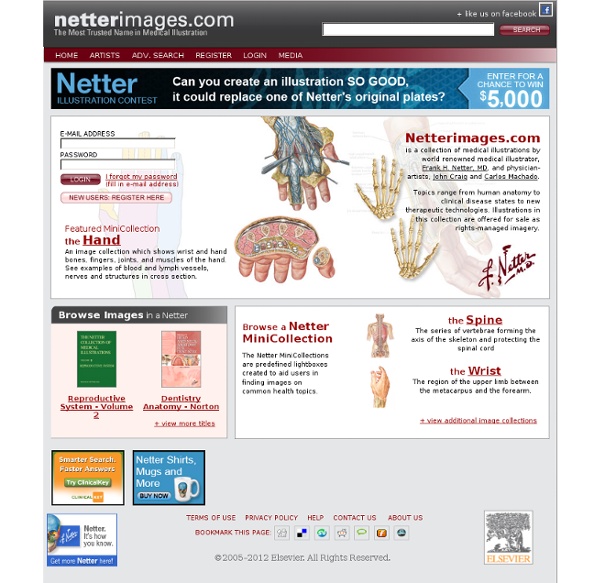



Digital Anatomist Interactive Atlases Structural Informatics GroupDepartment of Biological StructureUniversity of Washington Seattle, Washington, USA Atlases Content: 2-D and 3-D views of the brain from cadaver sections, MRI scans, and computer reconstructions.Author: John W. SundstenInstitution: Digital Anatomist Project, Dept. Content: Neuroanatomy Interactive Syllabus. Atlas was formerly available on CD-ROM (JAVA program running on Mac and PC platform). Content: 3-D views of thoracic organs reconstructed from 1 mm cryosections of a cadaver specimen provided by Wolfgang Rauschning.Authors: David M. Atlas was formerly available on CD-ROM. Content: 2-D and 3-D views of the knee from cadaver sections, MRI scans, and computer recontructions.Author: Peter Ratiu and Cornelius RosseInstitution: Digital Anatomist Project, Dept. FAQHelp on Program UseSoftware Credits and CopyrightPrivacy and advertising policiesAbout the Structural Informatics Group
ExRx (Exercise Prescription) on the Internet Robotic Seal Paro Helps Relieve Anxiety in Dementia Patients | Mental Health News Dementia and Alzheimer’s disease are expected to increase as the population ages, and one of the most difficult parts of patient treatment is managing the sufferer’s disorientation, stress, and confusion. Robotic pets may offer a solution to the growing need. Some nursing homes have started adding new residents to help patients overcome their fears. Part Furby and part Gremlin, Paro, who gets its name from the starting sounds of personal robots, is a baby seal that has a soft, furry exterior and reacts with the sounds and motions of a live baby seal, even wiggling when pet. Paro blinks at bright lights and makes yelping sounds if it is held upside down or treated roughly. Paro has multiple sensors that help it adapt to its surroundings, including tactile, temperature, and auditory sensors. Paro responds to positive and negative feedback. Developed by AIST, Paro was designed to allow patients to have access to animal therapy where it would be logistically difficult to have live pets.
Anatomy Dr. Francis' Anatomy Study Guide The links provided in this page are desinged to direct students to specifc elements within the Zoology 200 course offered by Dr. In order to access relevant information related to this course, navigate by clicking on the links to the right of this text. General Information regarding course requirements and schedules may be found in the General Information area. Specific learning tools, terminology and advice regarding studying anatomy and other study related information may be found in the Study Tips area. Specific learning objectives for each of the major units and systems covered during the course are found in the Learning Objectives area. Key vocabulary associated with each of the systems covered in the course are found in the Vocabulary area. Laboratory related material including bone and model photographs and keys may be found on The Lab Page. Return to Home Page
Northeastern University: a leader in global experiential learning in Boston, MA Crimando's Skeleton Tutorials [ Crimando's HomePage | GateWay HomePage | Legal Disclaimer ] Last Modified: January, 2008 (J. Crimando). Skeleton Tutorials Practice identifying anatomical structures of the skeletal system. Choose the bones you want to explore. [ BIO201 Lecture | BIO201 Study Q's | BIO201 Assignments | Syllabi | BIO202 Lecture | BIO202 Study Q's | BIO202 Assignments ][ Human Biodyssey Home | Cool A&P Tutorials | Writing Essays | Science ToolBox | Surviving College | Prof Email | Feedback ] | GateWay's Library | GateWay's HomePage | Maricopa Home ] Created and copyrighted © J. Becoming A Doctor | Indigenous Physicians Association Of Canada Becoming a doctor is a long process. Most medical school require that you complete a 3- or 4-year undergraduate degree prior to starting medical training, but this can vary. Some medical schools have specific prerequisite courses, while others have only suggested courses, and others have no preference at all. Because most medical schools require that the Medical College Admissions Test (MCAT) to be written, many students choose undergraduate classes that will help them prepare for this exam. The application process is different at each medical school. Educational history (including university transcripts)Employment historyExtracurricular activitiesVolunteer experienceMCAT resultsReference lettersPersonal statement letter (not all schools) Medical school is typically a four-year program, however there are some 3-year programs (University of Calgary, McMaster University). Please browse the menu on the left for more information.
All Stomach Muscles Anatomy And Abdominal Muscles Exercises Body proportions While there is significant variation in anatomical proportions between people, there are many references to body proportions that are intended to be canonical, either in art, measurement, or medicine. Similarly, in art, body proportions are the study of relation of human or animal body parts to each other and to the whole. These ratios are used in veristic depictions of the figure, and also become part of an aesthetic canon within a culture. Basics of human proportions[edit] Human proportions marked out in an illustration from a 20th century anatomy text-book. Different proportions in different people. It is important in figure drawing to draw the human figure in proportion. The proportions used in figure drawing are:[citation needed] Western ideal[edit] Leg-to-body ratio[edit] Another study using British and American participants, found "mid-ranging" leg-to-body ratios to be most ideal.[8] Muscle men and thin women[edit] Japanese ideal[edit] Leonardo da Vinci[edit] Additional images[edit]
bodies-in-motion - scott-eaton.com 30 second sequences from BiM Not long ago, I had twelve artists from Natural Motion (of Morpheme and Clumsy Ninja fame) into Somerset House, my home away from home, for a four day anatomy workshop. At the end of each day we would take about 20 minutes to draw from the Bodies in Motion library. sketching from BiM We made extensive use of the timer for gesture drawing. timelapse of a sequence of 30 second poses